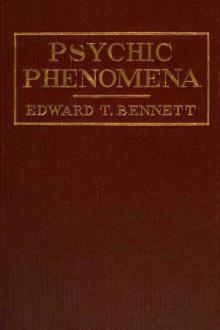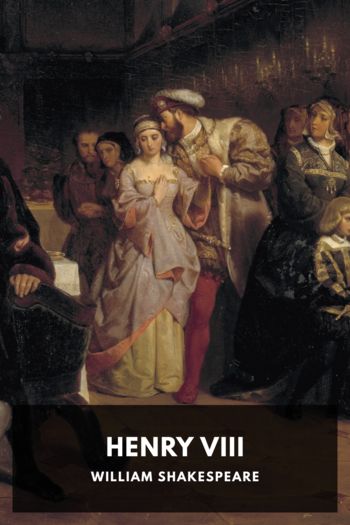Don Quixote by Miguel de Cervantes Saavedra (electric book reader TXT) 📕

Description
Don Quixote is a novel that doesn’t need much introduction. Not only is it widely considered the greatest Spanish literary work of all time, one of the greatest literary works in history, and a cornerstone of the Western literary canon, it’s also considered one of the first—if not the first—modern novels.
This Standard Ebooks edition is believed to be the first ebook edition of Don Quixote to feature a full transcription of translator John Ormsby’s nearly 1,000 footnotes. Ormsby as an annotator deftly explains obscure passages, gives background on the life and times of 1600s Spain, references decisions from other contemporary translators, and doesn’t hold back from sharing his views on the genius—and flaws—of Cervantes’ greatest work.
The story is of the eponymous Don Quixote, a country noble who, in his old age, reads too many chivalric romances and goes mad. After convincing his grubby servant, Sancho Panza, to join him as his squire, he embarks on an absurd and comic quest to do good and right wrongs.
Today Don Quixote’s two volumes are published as a single work, but their publication came ten years apart. Cervantes saw great success with the publication of his first volume, and appeared to have little desire to write a second volume until a different author wrote a spurious, inferior sequel. This kicked Cervantes into gear and he wrote volume two, a more serious and philosophical volume than the largely comic first volume.
Despite being written in 1605 and translated in 1885, Don Quixote contains a surprising amount of slapstick laughs—even for the modern reader—and narrative devices still seen in today’s fiction, including meta-narratives, frame narratives, and metafiction. Many scenes (like Quixote’s attack on the windmills) and characters (like Sancho Panza and Lothario) are so famous that they’re ingrained in our collective culture.
Read free book «Don Quixote by Miguel de Cervantes Saavedra (electric book reader TXT) 📕» - read online or download for free at americanlibrarybooks.com
- Author: Miguel de Cervantes Saavedra
Read book online «Don Quixote by Miguel de Cervantes Saavedra (electric book reader TXT) 📕». Author - Miguel de Cervantes Saavedra
It is only natural, therefore, that the biographers of Cervantes, forced to make brick without straw, should have recourse largely to conjecture, and that conjecture should in some instances come by degrees to take the place of established fact. All that I propose to do here is to separate what is matter of fact from what is matter of conjecture, and leave it to the reader’s judgment to decide whether the data justify the inference or not.
The men whose names by common consent stand in the front rank of Spanish literature, Cervantes, Lope de Vega, Quevedo, Calderón, Garcilaso de la Vega, the Mendozas, Góngora, were all men of ancient families, and, curiously, all, except the last, of families that traced their origin to the same mountain district in the North of Spain. The family of Cervantes is commonly said to have been of Galician origin, and unquestionably it was in possession of lands in Galicia at a very early date; but I think the balance of the evidence tends to show that the “solar,” the original site of the family, was at Cervatos in the northwest corner of Old Castile, close to the junction of Castile, León, and the Asturias. As it happens, there is a complete history of the Cervantes family from the tenth century down to the seventeenth extant under the title of Illustrious Ancestry, Glorious Deeds, and Noble Posterity of the Famous Nuño Alfonso, Alcaide of Toledo, written in 1648 by the industrious genealogist Rodrigo Mendez Silva, who availed himself of a manuscript genealogy by Juan de Mena, the poet laureate and historiographer of John II.
The origin of the name Cervantes is curious. Nuño Alfonso was almost as distinguished in the struggle against the Moors in the reign of Alfonso VII as the Cid had been half a century before in that of Alfonso VI, and was rewarded by diverse grants of land in the neighbourhood of Toledo. On one of his acquisitions, about two leagues from the city, he built himself a castle which he called Cervatos, because “he was lord of the solar of Cervatos in the Montaña,” as the mountain region extending from the Basque Provinces to León was always called. At his death in battle in 1143, the castle passed by his will to his son Alfonso Munio, who, as territorial or local surnames were then coming into vogue in place of the simple patronymic, took the additional name of Cervatos. His eldest son Pedro succeeded him in the possession of the castle, and followed his example in adopting the name, an assumption at which the younger son, Gonzalo, seems to have taken umbrage.
Everyone who has paid even a flying visit to Toledo will remember the ruined castle that crowns the hill above the spot where the bridge of Alcántara spans the gorge of the Tagus, and with its broken outline and crumbling walls makes such an admirable pendant to the square solid Alcázar towering over the city roofs on the opposite side. It was built, or as some say restored, by Alfonso VI shortly after his occupation of Toledo in 1085, and called by him San Servando after a Spanish martyr, a name subsequently modified into San Servan (in which form it appears in the Poem of the Cid), San Servantes, and San Cervantes: with regard to which last the Handbook for Spain warns its readers against the supposition that it has anything to do with the author of Don Quixote. Ford, as all know who have taken him for a companion and counsellor on the roads of Spain, is seldom wrong in matters of literature or history. In this instance, however, he is in error. It has everything to do with the author of Don Quixote, for it is in fact these old walls that have given to Spain the name she is proudest of today. Gonzalo, above mentioned, it may be readily conceived, did not relish the appropriation by his brother of a name to which he himself had an equal right, for though nominally taken from the castle, it was in reality derived from the ancient territorial possession of the family, and as a set-off, and to distinguish himself (diferenciarse) from his brother, he took as a surname the name of the castle on the bank of the Tagus, in the building of which, according to a family tradition, his great-grandfather had a share.
Both brothers founded families. The Cervantes branch had more tenacity; it sent offshoots in various directions, Andalusia, Estremadura, Galicia, and Portugal, and produced a goodly line of men distinguished in the service of Church and State. Gonzalo himself, and apparently a son of his, followed Ferdinand III in the great campaign of 1236–48 that gave Cordova and Seville to Christian Spain and penned up the Moors in the kingdom of Granada, and his descendants intermarried with some of the noblest families of the Peninsula and numbered among them soldiers, magistrates, and Church dignitaries, including at least two cardinal-archbishops.
Of the line that settled in Andalusia, Deigo de Cervantes, Commander of the Order of Santiago, married Juana Avellaneda, daughter of Juan Arias de Saavedra, and had several sons, of whom one was Gonzalo Gomez, Corregidor of Jerez and ancestor of the Mexican and Columbian branches of the family; and another, Juan, whose son Rodrigo married Doña Leónor de Cortinas, and by her had four children, Rodrigo, Andrea, Luisa, and Miguel, our author.
The pedigree of Cervantes is not without its bearing on Don Quixote. A man who could look back upon an ancestry of genuine knights-errant extending from well-nigh the time of Pelayo to the siege of Granada was likely to have a strong feeling on the subject of the sham chivalry of the romances. It gives a point, too, to what he says in more than one place about families that have once been great and have tapered away





Comments (0)